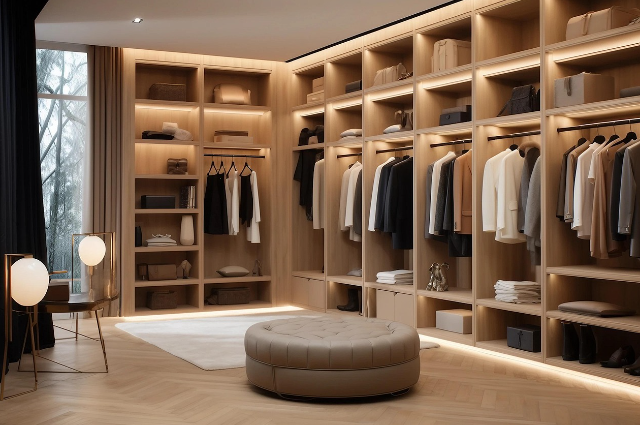
A fashion trend signifies a specific garment or style that gains widespread popularity during a particular era, influencing a broad spectrum of consumers, products, and brands. Throughout most of the 20th century, trends originated from fashion houses, influencing a broad spectrum of consumers, products, and brands. Throughout most of the 20th century, trends originated from fashion houses, influencing magazines and catalogs that eventually reached consumers. However, the digital age has paved the way to a new era where trends emerge from the runways. Street style and most notably fashion influencers
Phases of the fashion cycle
Trends typically follow a pattern resembling a bell curve, steadily ascending until they reach their peaks and then gradually fading into obscurity. Understanding the fashion cycle can help you catch emerging trends before they decline and turn into outdated pieces in your closet.
Trends began with a small group known as innovators. These trendsetters kick things off at fashion shows or fashion-forward celebrities, creating a buzz within an exclusive circle.
Next, the trend gains momentum in the increase phase and attracts early adopters. This is the point where social media influencers on TikTok or Instagram came into play and pushed the trend into the spotlight. It will also start to emerge on the racks of retail stores.
The peak phase is when the trend as its height, everyday consumers embrace the trend, and it becomes a staple in mass production across various price points. Walk into any store, and you will likely find a variation hanging on the racks.
However, after the population peaks. The trend faces a decline phase; trendsetters are always on the lookout for the next big thing, and start distancing themselves from what has become too mainstream. Over-saturation sets in, and weariness creeps in among the masses.
The inevitable follows in the obsolescence phase, where the trend is deemed unfashionable and outdated. The fashion world rejects it to make room for the next big trend.
Difference between trendy vs timeless classic
Understanding the difference between trendy bs timeless classic fashion involves considering both duration and stylistic aspects of the piece. Trendy items typically remain in a style for a period ranging from 6 months to 5 years. Microtrends or fads have an even shorter lifer span 1 to 16 months. In contrast, timeless classics exhibit enduring style, remaining fashionable for more than 5 years. Timeless classics, characterized by it’s continuous production, purchase, and wear, will always be offered in retail stores with various iterations. Examining the style of a piece provides another way to distinguish between trendy and timeless classic fashion. Trendy items often feature distinctive details like imaginative patterns, unconventional designs, or vibrant colors. On the flip side, timeless classics tend to embrace simplicity, appearing more understated than their trendier counterparts. They typically favour neutral colors and simpler lines.
To determine the nature of a piece, ask yourself these questions. First, consider whether the item was popular over five years ago, a positive indicator of classic style. Additionally, imagine yourself in the future, envisioning your style evolution in 5 or 10 years. If you can confidently see yourself wearing the piece in the years to come, it’s a promising indication of its timeless appeal. If a particular trend suddenly saturates your social media feeds, it usually signals the makings of a fast trend. By the time you add it to your shopping cart, there is a likelihood it could already be outdated by the time it finally arrives at your doorstep.
What are the timeless classic style essentials?
Building a wardrobe with longevity ensures enduring style that starts with investing in timeless classics crafted with high-quality materials and Impeccable garment construction. The following items stand the test of time and remain stylish regardless of the ever-changing fashion landscape. Similar to the concept of capsule wardrobes, it emphasizes a curated collection of versatile and essential items.
Basic tops
Even beyond your timeless classic white tee, consider expanding your collection with versatile basic tops like tank tops, tees, or blouses. Opt for simple pieces that provide comfort and effortlessly complement various outfits in your closet.
Denim jeans
A reliable pair of denim jeans is a wardrobe essential. Opt for styles characterized by simplicity and comfort while steering clear of excessive distressing or embellishments.
Trousers
Even though they are ideal for professional settings, trousers can offer sophistication in any situation. Crafted with quality materials and thoughtful designs, they seamlessly adapt to various styles and moods.
Sweaters and cardigans
These pieces serve as excellent layering options, offering a range of styles, whether a pullover, a cozy cardigan, or sweaters, that remain an essential wardrobe staple.
Basic blazer
A well-made basic blazer adds a touch of elegance to any ensemble. Prioritise designs with enduring quality, allowing for subtle yet lasting protection.
Little black dress
The ionic little dress transcends fashion eras. Choose a style that resonates with your individuality, creating a versatile canvas for many different looks.
Coat
A go-to coat, fashioned from high-quality materials, serves as an investment, offering both warmth and a stylish finishing touch.
While there is no singular definition of classic style in my opinion, it is synonymous with timeless silhouettes, effortless outfits, and enduring appeal. Also, classic fashion makes us believe it can span different ages and stages of life. For example, both 25 year 25-year-old and 45 year 45-year-old could wear a pair of high-rise jeans with a white button-down shirt and look equally great. Classic style is the cheat code to always looking stylish and put together.
References
